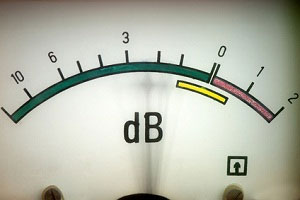What Is A Decibel In Audio Recording?

Well, the short answer – and the one that will be most useful to you without having to know the gory technical details – is that it is a unit of measure for how loud audio is. For example, when you want to know how long something is, you measure in units of inches, feet, yards, etc. Or if you use the decimal system, centimeters, meters, etc. The decibel is something like that, only for loudness of audio, and it uses the decimal system like a lot of things in audio.
But there are some funky things about the decibel. For one thing, it is almost always referred to as a negative number in digital audio, where zero is the top of the scale. What? Yup. It’s like going through the looking glass and doing everything backwards. If you want to make -20 dB audio louder, you turn it up until it gets to -15 dB, or more. See? Funky!
In fact it’s so funky that there is a move afoot (or should that be “adecimeter”? – ha! Sorry:)) to do away with it altogether in the audio recording world! And in a world where obtuse and often needlessly complicated terms are commonplace, that is saying something.
Here is a terrific article from Recording Magazine by Alex Case about the decibel, which is written in a pretty easy-to-understand way. Still, the term “logarithm” does appear. So be prepared to put on your math trousers.
The article is here: https://www.recordingmag.com/resources/resourceDetail/265.html
